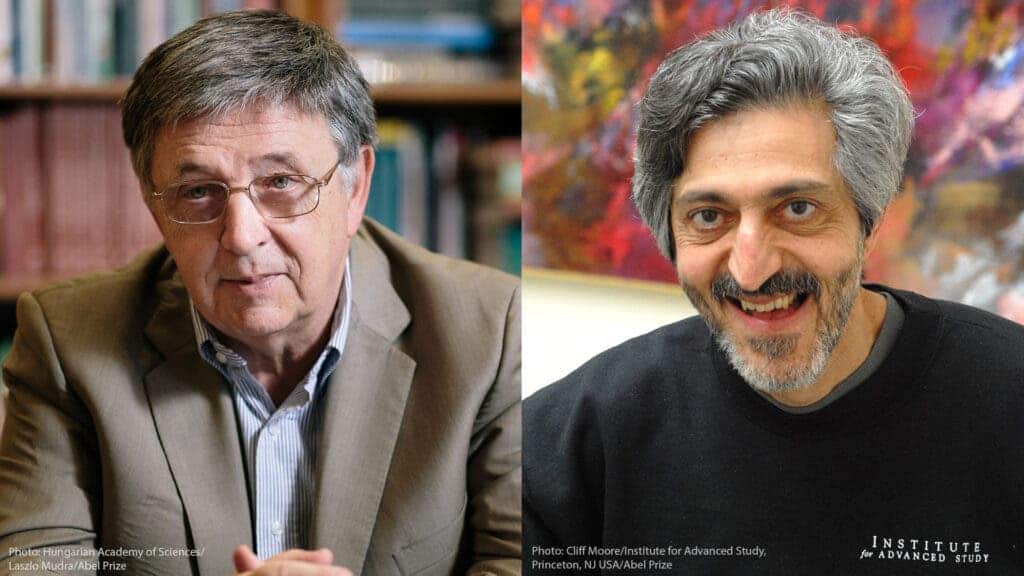László Lovász and Avi Wigderson have been awarded the Abel Prize, sometimes referred to as the ‘Nobel of Mathematics’. The two were recognized for groundbreaking contributions in theoretical computer science and discrete mathematics, as well as “their leading role in shaping them into central fields of modern mathematics.”

Mathematics can often seem like an occult field of research, thoroughly detached from mundane day-to-day life. But even though we may not realize it, mathematics affects our daily lives in more ways than one.
Take, for instance, the platform I wrote this article on, and your browser or app that allows you to read it. Both are secured by algorithms which we are blissfully unaware of, but without which, it would be impossible to communicate over the internet. As the internet itself takes a more central role in our lives, the unseen algorithms that help it run smoothly also become more important — and some of those algorithms were pioneered by Lovász and Wigderson.
“Lovász and Wigderson have been leading forces in this development over the last decades. Their work interlaces in many ways, and, in particular, they have both made fundamental contributions to understanding randomness in computation and in exploring the boundaries of efficient computation,” says Hans Munthe-Kaas, chair of the Abel committee.
It was at some point in the 1970s that a generation of mathematicians realized that the emerging field of computer science was essentially a new area of application for mathematics. Randomness, for instance, became not only a curiosity of mathematics but an area with direct applications. Randomness is essential for cryptography and plays a fundamental role in the design of many algorithms.
Avi Wigderson was one of the mathematicians who understood the importance of this field. He’s part of a keen type of mathematician able to see links between seemingly unrelated areas. He has published papers with over 100 collaborators, in fields ranging from complexity theory to quantum computation. Wigderson also made contributions to a concept called zero-knowledge proof, in which one party can prove to another party that they know a value, without conveying any information apart from the fact that they know the value — 30 years on, this concept is used in blockchain technology.
Every big problem in complexity theory, Wigderson has had a go at it — often with success. His contribution to this field has been instrumental, and this is owed in part to his approachable, collaborative, and curious nature.
“I consider myself unbelievably lucky to live in this age,” he says. “[Computational complexity] is a young field. It is a very democratic field. It is a very friendly field, it is a field that is very collaborative, that suits my nature. And definitely, it is bursting with intellectual problems and challenges.”
Meanwhile, László Lovász proved himself to be a stellar mathematician from his teenage years. He published his first paper when he was 17, and it wasn’t a coincidence: he published two more in the next two years. By the time he graduated from the Eötvös Loránd University, he was awarded a Candidate Degree of Mathematical Science by the Hungarian Academy of Sciences — a degree higher than a doctorate. University regulations did not allow a student to apply for a Ph.D. until he finished his undergraduate studies, but no such rules existed in the Academy of Science because it was assumed that it wasn’t necessary.
Lovász went on to publish over a dozen papers and hold several talks at prestigious conferences before being awarded any degree, and he never really stopped. His meeting with the famous “nomadic mathematician” Paul Erdös, who was known for his insatiable hunger for mathematical problem-solving, not only inspired Lovász, but set a direction for his working style, which became open and collaborative.
Lovász is interested in connections between discrete mathematics and other branches of mathematics. His work focused especially on combinatorics (the mathematic of patterns) and graph theory (the mathematic of network). For Paul Erdös, these fields were an intellectual curiosity, but Lovász saw that they could be applied practically in the field of computer science. In the 1970s, graph theory became one of the first areas of pure mathematics to impact computer science. As the years went on, Lovász’s work established many ways in which pure mathematics can address fundamental theoretical questions in computer science. He traveled widely, held positions in several countries, and became known for his generosity and openness.
“I was very lucky to experience one of those periods when mathematics was developing completely together with an application area,” he says.
The work of the two pioneers was crucial to a then-nascent and now thriving, but the still-young field of computer science. They laid out the groundwork for the theoretical framework and continued to solve long-standing problems in various fields of mathematics.
But perhaps the most striking trait of the two laureates is their approach to mathematics: collaborative, democratic, and open. There is a lesson that can benefit all of us, regardless of our mathematical ability: mathematics, like science, and like all discovery, works best when it is collaborative.


